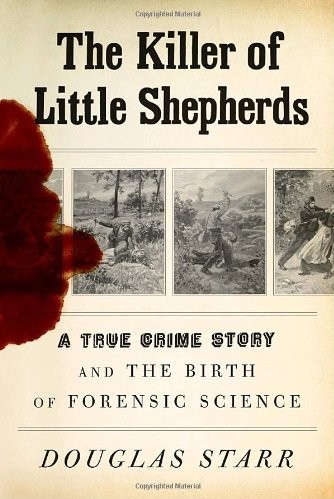

Most ebook files are in PDF format, so you can easily read them using various software such as Foxit Reader or directly on the Google Chrome browser.
Some ebook files are released by publishers in other formats such as .awz, .mobi, .epub, .fb2, etc. You may need to install specific software to read these formats on mobile/PC, such as Calibre.
Please read the tutorial at this link: https://ebookbell.com/faq
We offer FREE conversion to the popular formats you request; however, this may take some time. Therefore, right after payment, please email us, and we will try to provide the service as quickly as possible.
For some exceptional file formats or broken links (if any), please refrain from opening any disputes. Instead, email us first, and we will try to assist within a maximum of 6 hours.
EbookBell Team

4.7
16 reviewsStarr (Blood) eloquently juxtaposes the crimes of French serial killer Joseph Vacher and the achievements of famed criminologist Dr. Alexandre Lacassagne during France's belle époque. From 1894 to 1897, Vacher is thought to have raped, killed, and mutilated at least 25 people, though he would confess to only 11 murders. Lacassagne, who headed the department of legal medicine at the university in Lyon, was a pioneer in crime scene analysis, body decomposition, and early profiling, and investigated suspicious deaths, all in an era when rural autopsies were often performed on the victim's dinner table. Lacassagne's contributions to the burgeoning field of forensic science, as well as the persistence of investigating magistrate Émile Fourquet, who connected crimes while crisscrossing the French countryside, eventually brought Vacher to justice. Vacher claimed insanity, which then (as now) was a vexed legal issue. Lacassagne proved the "systematic nature" of the crimes. Starr, codirector of Boston University's Center for Science and Medical Journalism, creates tension worthy of a thriller; in Lacassagne, he portrays a man determined to understand the "how" behind some of humanity's most depraved and perhaps take us one step closer to the "why." 16 pages of photos.
Copyright © Reed Business Information, a division of Reed Elsevier Inc. All rights reserved.
Douglas Starr is an old pro at reporting and writing science history, which puts The Killer of Little Shepherds squarely in his wheelhouse. The author ably tells two stories—of the serial killer Vacher’s lust for murder and of the developing science that finally caught up with him—and there are enough fascinating details here to keep even the most jaded forensics fans entertained. More popular journalism than a failed “quest to understand evil” (_New York Times_), Starr’s compelling history can be added to the growing library of books (_Devil in the White City_, The Lost City of Z, The Ghost Map) that brings to life forgotten or neglected events by playing on a reader’s sense of adventure and the unknown, as well as the satisfaction of witnessing a confounding puzzle well solved.